CASP8
-
Official Full Name
caspase 8, apoptosis-related cysteine peptidase
-
Overview
This gene encodes a member of the cysteine-aspartic acid protease (caspase) family. Sequential activation of caspases plays a central role in the execution-phase of cell apoptosis. Caspases exist as inactive proenzymes composed of a prodomain, a large protease subunit, and a small protease subunit. Activation of caspases requires proteolytic processing at conserved internal aspartic residues to generate a heterodimeric enzyme consisting of the large and small subunits. This protein is involved in the programmed cell death induced by Fas and various apoptotic stimuli. The N-terminal FADD-like death effector domain of this protein suggests that it may interact with Fas-interacting protein FADD. This protein was detected in the insoluble fraction of the affected brain region from Huntington disease patients but not in those from normal controls, which implicated the role in neurodegenerative diseases. Many alternatively spliced transcript variants encoding different isoforms have been described, although not all variants have had their full-length sequences determined. [provided by RefSeq, Jul 2008] -
Synonyms
CASP8; caspase 8, apoptosis-related cysteine peptidase; CAP4; MACH; MCH5; FLICE; ALPS2B; Casp-8; caspase-8; FADD-like ICE; MACH-alpha-1/2/3 protein; apoptotic protease Mch-5; MACH-beta-1/2/3/4 protein; apoptotic cysteine protease; ICE-like apoptotic protease 5; MORT1-associated ced-3 homolog; FADD-homologous ICE/CED-3-like protease; caspase 8, apoptosis-related cysteine protease;
- Recombinant Proteins
- Cell & Tissue Lysates
- Protein Pre-coupled Magnetic Beads
- Cattle
- Chicken
- Human
- Mouse
- Rat
- Zebrafish
- E. coli
- E.coli
- HEK293
- Mammalian Cell
- His
- His (Fc)
- Avi
- His|T7
- N/A
- N
- Tag Free
| Species | Cat.# | Product name | Source (Host) | Tag | Protein Length | Price |
|---|---|---|---|---|---|---|
| Human | CASP8-26H | Active Recombinant Human CASP8, His-tagged | E.coli | His |
|
|
| Human | CASP8-404H | Recombinant Human Caspase 8, Apoptosis-Related Cysteine Peptidase | E.coli | N/A |
|
|
| Human | CASP8-7828H | Recombinant Human CASP8 protein, His & T7-tagged | E.coli | His/T7 | Leu385~Asp479 (Accession# Q14790) |
|
| Human | CASP8-26606TH | Active Recombinant Human CASP8 Protein | E.coli | N/A |
|
|
| Human | CASP8-7829H | Recombinant Human CASP8 protein, His-tagged | E.coli | His | Leu7~Asp201 |
|
| Human | CASP8-147H | Recombinant Human CASP8 Protein, His-tagged | E.coli | His |
|
|
| Human | CASP8-7829HCL | Recombinant Human CASP8 293 Cell Lysate | HEK293 | N/A |
|
|
| Human | CASP8-7830HCL | Recombinant Human CASP8 293 Cell Lysate | HEK293 | N/A |
|
|
| Human | CASP8-7831HCL | Recombinant Human CASP8 293 Cell Lysate | HEK293 | N/A |
|
|
| Human | CASP8-0834H | Recombinant Human CASP8 Protein (Ser217-Asp479), N-His tagged | E.coli | N-His | Ser217-Asp479 |
|
| Human | CASP8-0863H | Recombinant Human CASP8 Protein | E.coli | Tag Free |
|
|
| Human | CASP8-4937H | Recombinant Human CASP8 Protein(217–374aa), His-tagged | E. coli | N-His | 217–374aa |
|
| Mouse | Casp8-1645M | Recombinant Mouse Caspase 8 | E.coli | N/A |
|
|
| Mouse | CASP8-2756M | Recombinant Mouse CASP8 Protein | Mammalian Cell | His |
|
|
| Mouse | Casp8-7830M | Recombinant Mouse Casp8 protein, His & T7-tagged | E.coli | His/T7 | Ser219~Gly376 (Accession # O89110) |
|
| Mouse | Casp8-7831M | Recombinant Mouse Casp8 protein, His & T7-tagged | E.coli | His/T7 | Met1~Asp218 (Accession # O89110) |
|
| Mouse | CASP8-1247M | Recombinant Mouse CASP8 Protein, His (Fc)-Avi-tagged | HEK293 | His (Fc)-Avi |
|
|
| Mouse | CASP8-1247M-B | Recombinant Mouse CASP8 Protein Pre-coupled Magnetic Beads | HEK293 |
|
||
| Rat | Casp8-7832R | Recombinant Rat Casp8 protein, His & T7-tagged | E.coli | His/T7 | Tyr8~Val197 (Accession# Q9JHX4) |
|
| Rat | CASP8-1146R | Recombinant Rat CASP8 Protein | Mammalian Cell | His |
|
|
| Rat | CASP8-804R | Recombinant Rat CASP8 Protein, His (Fc)-Avi-tagged | HEK293 | His (Fc)-Avi |
|
|
| Rat | CASP8-804R-B | Recombinant Rat CASP8 Protein Pre-coupled Magnetic Beads | HEK293 |
|
||
| Cattle | CASP8-7827C | Recombinant Cattle CASP8 protein, His-tagged | E.coli | His | Leu25~Ile175 (Accession # Q2LGB8) |
|
| Zebrafish | CASP8-9059Z | Recombinant Zebrafish CASP8 | Mammalian Cell | His |
|
|
| Chicken | CASP8-6161C | Recombinant Chicken CASP8 | Mammalian Cell | His |
|
- Background
- Quality Guarantee
- Case Study
- Involved Pathway
- Protein Function
- Interacting Protein
- CASP8 Related Articles
- CASP8 Related Research Area
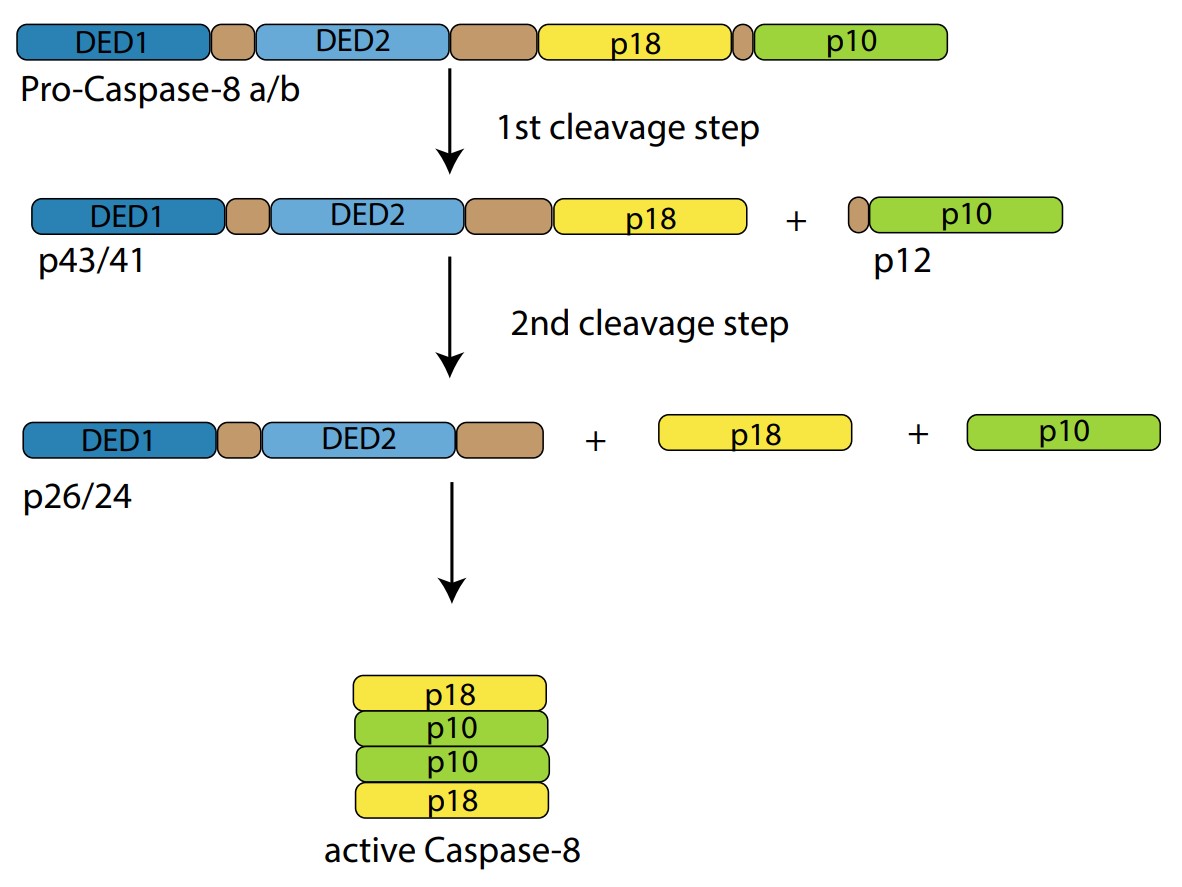
Fig1. Structure of pro-caspase-8 and cleavage to active caspase-8. (Izabela Kostova, 2021)
What is CASP8 protein?
CASP8 (caspase 8) gene is a protein coding gene which situated on the long arm of chromosome 2 at locus 2q33. This gene encodes a member of the cysteine-aspartic acid protease (caspase) family. Sequential activation of caspases plays a central role in the execution-phase of cell apoptosis. Caspases exist as inactive proenzymes composed of a prodomain, a large protease subunit, and a small protease subunit. The N-terminal FADD-like death effector domain of this protein suggests that it may interact with Fas-interacting protein FADD. The CASP8 protein is consisted of 479 amino acids and its molecular mass is approximately 55.4 kDa.
What is the function of CASP8 protein?
CASP8 is an important intracellular caspase protease, which is mainly involved in the regulation of apoptosis and immune response. Its activation can trigger cell self-destruction, and plays a key role in immune cells to help maintain homeostasis. It is activated by death receptors (such as Fas and TRAIL receptors) after receiving extracellular apoptotic signals, and then activates downstream effector caspases, such as caspase 3, 6 and 7, thereby triggering a series of protein breakdown events in the cell, resulting in changes in cell morphology and function. Eventually leading the cells to programmed death.
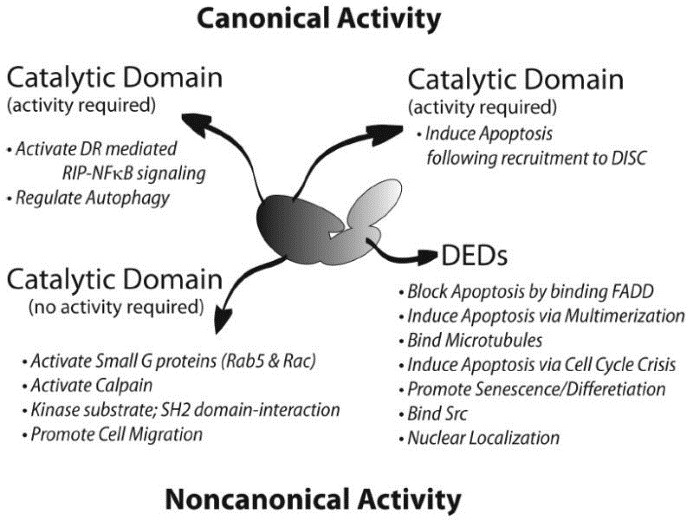
Fig2. Caspase-8 Plays Diverse Cellular Roles Many of the known roles of caspase-8 are summarized, coupled to the domains required to execute those activities. (Dwayne G Stupack, 2013)
CASP8 Related Signaling Pathway
Caspase-8 plays a crucial role in the exogenous pathway of apoptosis, receiving signals through death receptors such as Fas and TRAIL receptors, and recruiting RIPK1 through FADD, which in turn activates the NFκB pathway and affects gene transcription. The endogenous apoptotic pathway promotes the release of mitochondrial cytochrome C by mediating the proteolysis of BH3-only protein BID. In addition, CASP8 can mediate inflammatory responses, autophagy pathways, and Necroptosis and other cell death processes.
CASP8 Related Diseases
Abnormal functioning of CASP8 has been associated with a variety of diseases, including: Cancer: Caspase 8 plays an important role in tumor cell apoptosis, and its low expression or inactivation can cause tumor cells to escape apoptosis, thereby promoting the occurrence and development of cancer.
Neurodegenerative diseases: such as Alzheimer's disease, Parkinson's disease, etc., which are associated with neuronal apoptosis and inflammation.Autoimmune diseases: such as systemic lupus erythematosus, rheumatoid arthritis, etc., these diseases are associated with abnormal activation of the immune system, and caspase 8 is involved in apoptosis and inflammation of immune cells.
Cardiovascular diseases: such as atherosclerosis, myocardial infarction, etc., these diseases are related to apoptosis and inflammation of vascular endothelial cells.Viral infection:Viral infection: such as HIV infection, hepatitis B virus infection, etc., these viruses can interfere with the normal function of caspase 8, thus affecting cell apoptosis and immune response.
Bioapplications of CASP8
Studying the role of Caspase 8 in immune cell apoptosis will help to understand the pathogenesis of autoimmune diseases and may guide therapeutic strategies for related diseases. By designing small molecule drugs that can regulate the activity of Caspase 8, it may be possible to help promote apoptosis of tumor cells and thus fight cancer.
High Purity
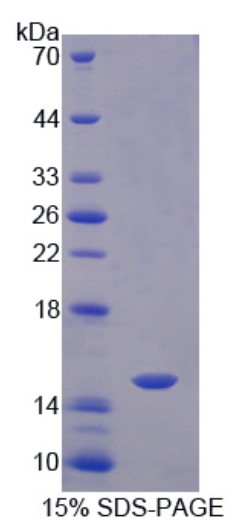
Fig1. SDS-PAGE (CASP8-7828H) (PROTOCOL for western blot)
.
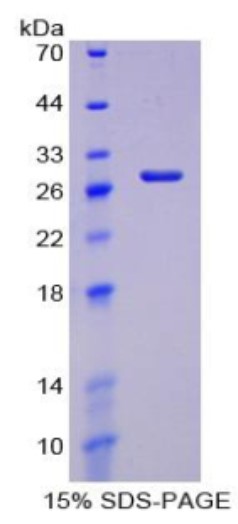
Fig2. SDS-PAGE (CASP8-7829H) (PROTOCOL for western blot)
Case study 1: Marta Cristaldi, 2023
Cigarette smoking impairs the lung innate immune response making smokers more susceptible to infections and severe symptoms. Dysregulation of cell death is emerging as a key player in chronic inflammatory conditions. CSE caused inhibition of the MyD88-dependent inflammatory response and activation of TRIF/caspase-8/caspase-1 pathway leading to Gasdermin D (GSDMD) cleavage and increased cell permeability. Herein, the researchers tested the hypothesis that activation of caspase-8 by CSE increased pro-inflammatory cell death of LPS-stimulated macrophages. To this purpose, they measured apoptotic and pyroptotic markers as well as the expression/release of pro-inflammatory mediators in hMDMs exposed to LPS and CSE, alone or in combination, for 6 and 24 h.
LPS/CSE-treated hMDMs, but not cells treated with CSE or LPS alone, underwent lytic cell death (LDH release) and displayed apoptotic features (activation of caspase-8 and -3/7, nuclear condensation, and mitochondrial membrane depolarization). And the negative regulator of caspase-8, coded by CFLAR gene, was downregulated by CSE. These findings show that upon exposure to LPS, CS inhibits the TLR4/MyD88 inflammatory response, downregulating the pro-inflammatory genes TNF and IL6 and the anti-apoptotic gene CFLAR, known to counteract caspase-8 activity. CS enhances caspase-8 activation through TLR4/TRIF, with a partial involvement of RIPK1, resulting on the activation of caspase-1/GSDMD axis leading to increased cell permeability and DAMP release through gasdermin pores.
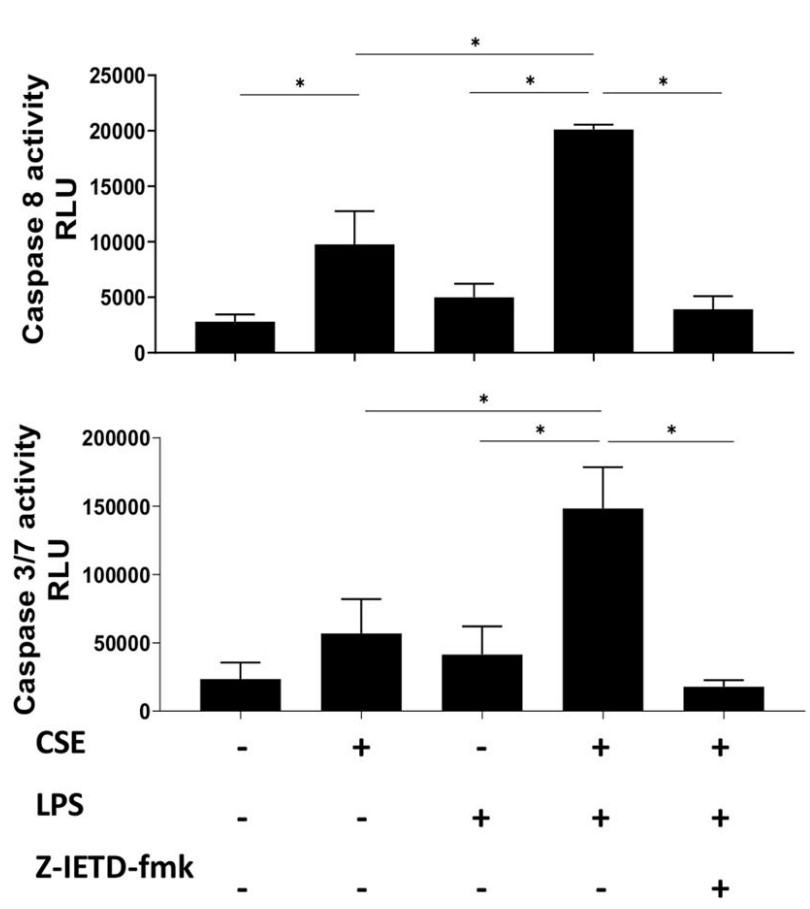
Fig1. Extracellular activity of Caspase-8 and -3/7 (expressed as relative luminescence unit, RLU), were measured after 24 h stimulation.
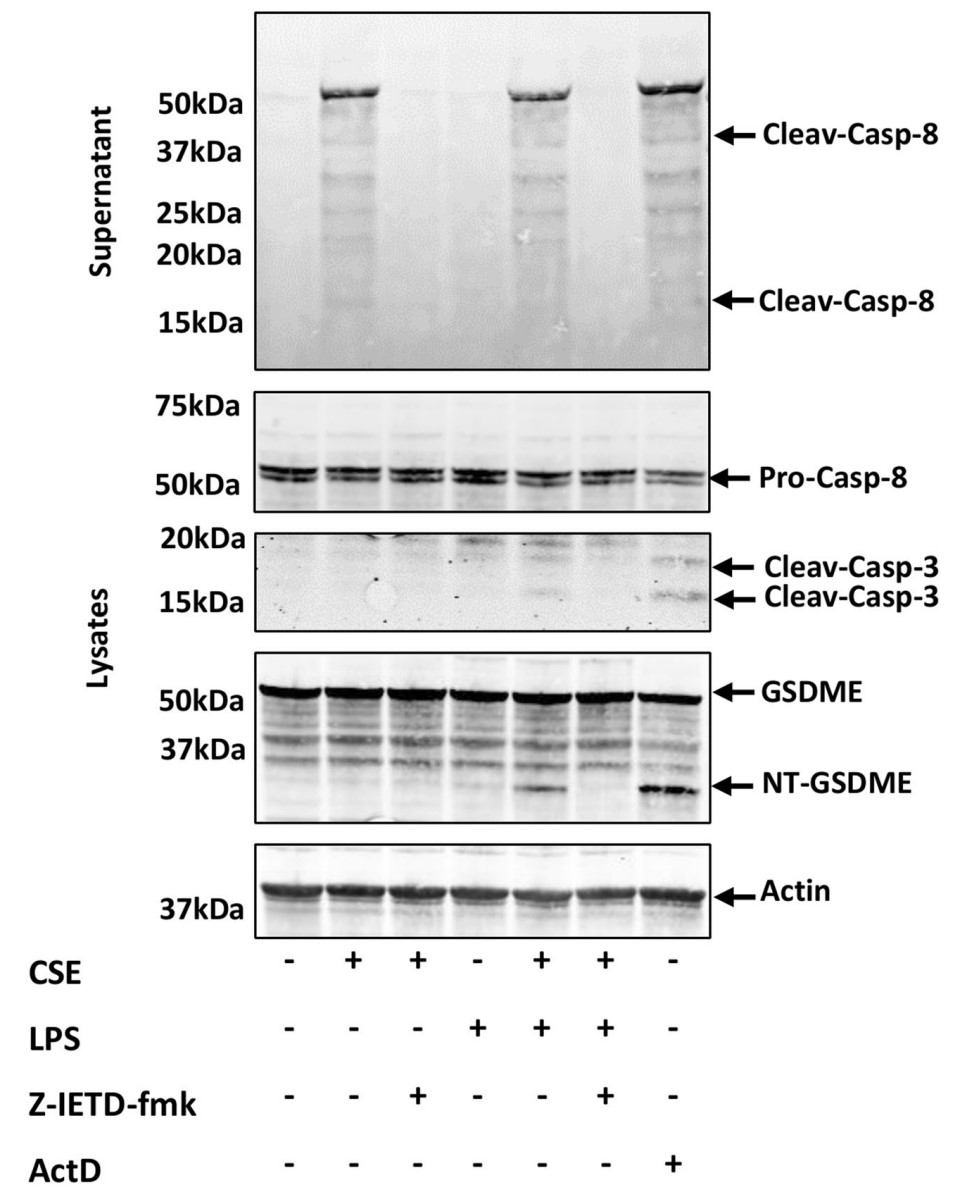
Case study 2: Claudia Contadini, 2023
Caspase-8 is a cysteine protease that plays an essential role in apoptosis. Consistently with its canonical proapoptotic function, cancer cells may genetically or epigenetically downregulate its expression. Unexpectedly, Caspase-8 is often retained in cancer, suggesting the presence of alternative mechanisms that may be exploited by cancer cells to their own benefit.
In this study, the researchers investigated the significance of Caspase-8 expression and of its phosphorylation on Y380 in glioblastoma, a brain tumor where both Caspase-8 expression and Src activity are often aberrantly upregulated. Transcriptomic analyses identified inflammatory response as a major target of Caspase-8. Src-dependent phosphorylation of Caspase-8 on Y380 drives the assembly of a multiprotein complex that triggers NFκB activation, thereby inducing the expression of inflammatory and pro-angiogenic factors.
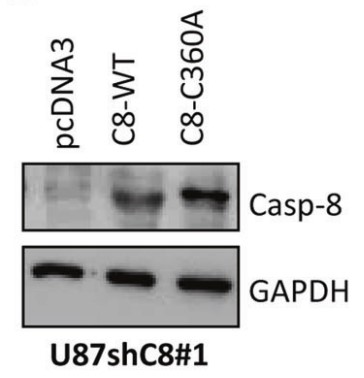
Fig3. Immunoblotting on total protein extracts from U87MG cells stably silenced for Caspase-8 expression (U87shC8#1) and transiently transfected with the empty vector (pcDNA3), Caspase-8-wt (C8-WT) or the catalytically inactive mutant, Caspase-8-C360A (C8-C360A). GAPDH was used as loading control for protein normalization.
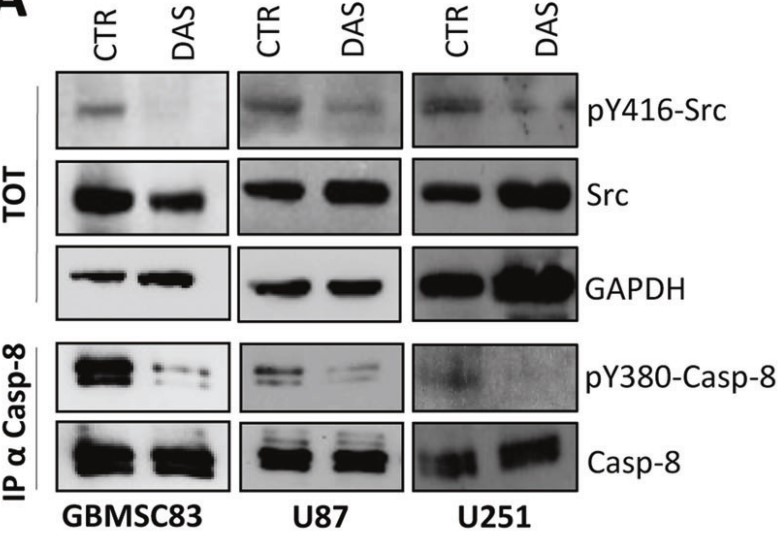
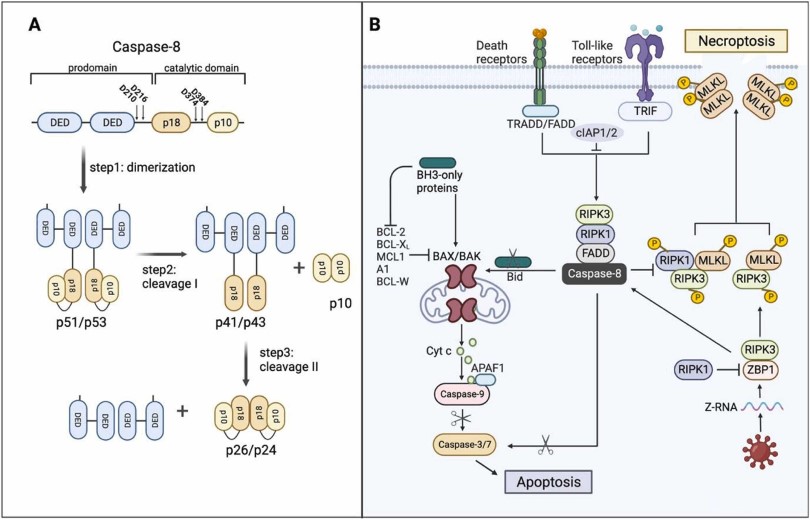
Fig1. Caspase-8 activity induces apoptosis and inhibits necroptosis. (Jiyi Pang, 2023)
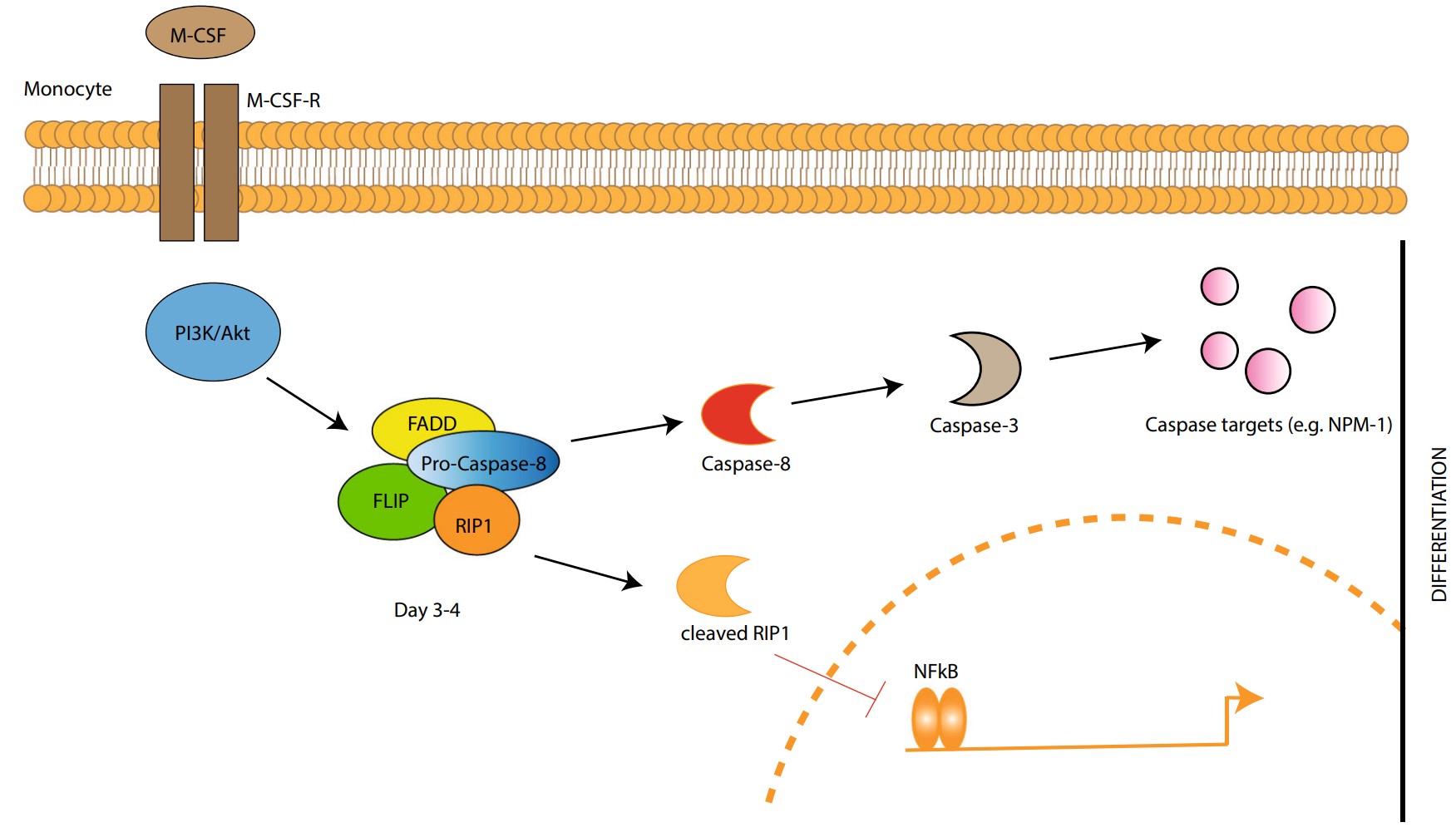
Fig2. The role of caspase-8 in macrophagic differentiation. (Izabela Kostova, 2021)
CASP8 involved in several pathways and played different roles in them. We selected most pathways CASP8 participated on our site, such as p signaling pathway, Apoptosis, Toll-like receptor signaling pathway, which may be useful for your reference. Also, other proteins which involved in the same pathway with CASP8 were listed below. Creative BioMart supplied nearly all the proteins listed, you can search them on our site.
| Pathway Name | Pathway Related Protein |
|---|---|
| p signaling pathway | PTEN;TP53I3;TP53;PIDD1;GADD45BA;RRM2;BAXA;TSC2;CCND1 |
| Apoptosis | BIRC2;PRKACG;CTNNB1;PANK1A;GZME;BCL2L1;CRADD;GAS2;PRKACA |
| Toll-like receptor signaling pathway | IL6;MAPK12A;PIK3CG;CCL3L1;IFNA4;CD80;IFNA21;LBP;MAPK12B |
| NOD-like receptor signaling pathway | CXCL2;HSP90B1;MAP3K7;IL8L2;MAPK14B;PYCARD;MAPK1;MAPK14A;HSP90AA1.2 |
| RIG-I-like receptor signaling pathway | TRAF3;ATG5;ISG15;SIKE1;IFNB;RNF207B;IFNA10;TBK1;MAP3K1 |
| TNF signaling pathway | PIK3CG;TAB2;TNFRSF1A;MAP3K14;CXCL10;MAPK9;MAPK13;CREB3L1;TRAF2 |
| Non-alcoholic fatty liver disease (NAFLD) | NDUFB10;NDUFS2;NDUFB1;UQCR11;NDUFC2-KCTD14;INSR;NDUFC1;NDUFA12;COX7A2L |
| Alzheimers disease | COX8A;ADAM17;NDUFB5;APP;PSEN1;NDUFA2;GRIN1;Atp5g2;COX7A2L |
| Huntingtons disease | CYCS;TBPL2;NDUFA5;VDAC1;IFT57;VDAC2;SDHB;COX7A1;DNAIC2 |
| Legionellosis | HSF1;MYD88;NAIP6;NAIP1;CASP7;SEC22B;CR1;NLRC4;BCL2L13 |
| Chagas disease (American trypanosomiasis) | GNA15;CCL3L3;CXCL8;PIK3CB;TGFBR2;MAPK8;MYD88;TLR4;SERPINE1 |
| Toxoplasmosis | TYK2;PIK3CD;MAPK8;Toxoplasma Gondii Microneme Protein MIC3;PPIF;IL12A;H2-AB1;MAPK10;GNAO1 |
| Tuberculosis | ATP6V0D1;CALML5;IFNA14;IRAK1;C3;IRAK4;RFXAP;NFKB1;ATP6V0A1 |
| Hepatitis B | DDX3X;EGR3;CCNE1;BIRC5;IFNA7;STAT2;BAD;Casp3;NRAS |
| Herpes simplex infection | SRSF2B;Fasl;TBPL1;TAF5L;HLA-DMA;OAS1B;LOC100033925;TRAF1;CUL1 |
| Pathways in cancer | PIK3CA;GNAS;GSK3B;Ar;TCEB1;WNT1;FGF1;RUNX1T1;GNB4 |
| Viral carcinogenesis | PIK3CB;HIST1H2BO;GTF2B;HIST1H4I;HIST1H2BD;HDAC11;HPN;EIF2AK2;HIST1H2BL |
| Viral myocarditis | HLA-DQB1;HLA-DRB5;HLA-A;HLA-DRB4;H2-AB1;HLA-DRA;LAMA2;HLA-DPB1;HLA-E |
CASP8 has several biochemical functions, for example, cysteine-type endopeptidase activity, cysteine-type endopeptidase activity involved in apoptotic process, cysteine-type endopeptidase activity involved in apoptotic signaling pathway. Some of the functions are cooperated with other proteins, some of the functions could acted by CASP8 itself. We selected most functions CASP8 had, and list some proteins which have the same functions with CASP8. You can find most of the proteins on our site.
| Function | Related Protein |
|---|---|
| cysteine-type endopeptidase activity | CASP6L2;FAM49BA;USP25;Ctsl;LGMN;USP43A;USP38;CTSZ;USP22 |
| cysteine-type endopeptidase activity involved in apoptotic process | Casp3;CLC;CASP8 |
| cysteine-type endopeptidase activity involved in apoptotic signaling pathway | CFLAR;CASP2;CASP8;CASP14;CASP10;CFLARA;CASP8L1;CASP9 |
| cysteine-type peptidase activity | OTULIN;USP43A;CASP5;CASPBL;OTUD7A;USP43;CTSM;CTSW;CTSB |
| death effector domain binding | NOL3;CFLAR;CASP10;CASP8;FADD;CFLARA;CASP8L1 |
| death receptor binding | NOL3;FEM1B;TMBIM1;PRDM4;RIPK1;CFLAR;FADD;Fasl;BID |
| peptidase activity | PPPDE2;HE2;BMP1;CTSSA;REN2;CTSLL;PCSK5;PSMB8F;HTRA1A |
| protein binding | Icosl;GBF1;MLH1;FKBP1A;CD1d1;SLC6A3;CP110;GDF2;TMPRSS7 |
| protein complex binding | RIPK3;CEBPA;LRRC16A;VAMP2;MYC;AP2B1;PPIB;KLHL8;MYSM1 |
| protein heterodimerization activity | Pdgfa&Pdgfb;GABPB2;DRD2;IKZF2;CENPA;BCL2A;CLCN3;MAP3K7;SYCP2 |
| scaffold protein binding | NLGN1;KCNH2;NOS1;CACNA1G;KCNA5;MDM2;CHRNA7;LRP4;IKBKB |
| tumor necrosis factor receptor binding | TRAF6;TNFSF10L;TNFSF14;LTA;TNFB;LTB;TRAF2;TNFSF10L4;TNFSF12 |
| ubiquitin protein ligase binding | EGR2;BAG4;ERLIN2;HIF1A;SLC22A18;UBE2J2;HSPA9;TANK;BAG5 |
CASP8 has direct interactions with proteins and molecules. Those interactions were detected by several methods such as yeast two hybrid, co-IP, pull-down and so on. We selected proteins and molecules interacted with CASP8 here. Most of them are supplied by our site. Hope this information will be useful for your research of CASP8.
FADD
- Q&As
- Reviews
Q&As (6)
Ask a questionStudying the regulatory mechanism of CASP8 protein requires the comprehensive use of various experimental methods and techniques, such as gene knockout, transcriptome analysis, protein interaction, etc.
The mutation types of CASP8 protein include point mutations, insertions/deletions, duplications, etc., which may cause structural and functional abnormalities of the protein.
CASP8 protein has a complex relationship with other genes or proteins, and can interact with other genes or proteins and participate in a variety of biochemical reactions.
CASP8 protein plays a key role in apoptosis, and its activation can activate downstream effector molecules to trigger programmed cell death.
Mutations in the CASP8 protein can be detected and analyzed by methods such as whole-genome sequencing or target region sequencing to understand the impact of mutations on protein structure and function.
By regulating the level of CASP8 protein, some diseases related to apoptosis can be treated, such as by inhibiting its activity or regulating its expression.
Customer Reviews (3)
Write a reviewCASP8 is highly stable.
The reduction of the synthesis cost of this protein leads to the increase of the application.
CASP8 has a high specificity.
Ask a Question for All CASP8 Products
Required fields are marked with *
My Review for All CASP8 Products
Required fields are marked with *


